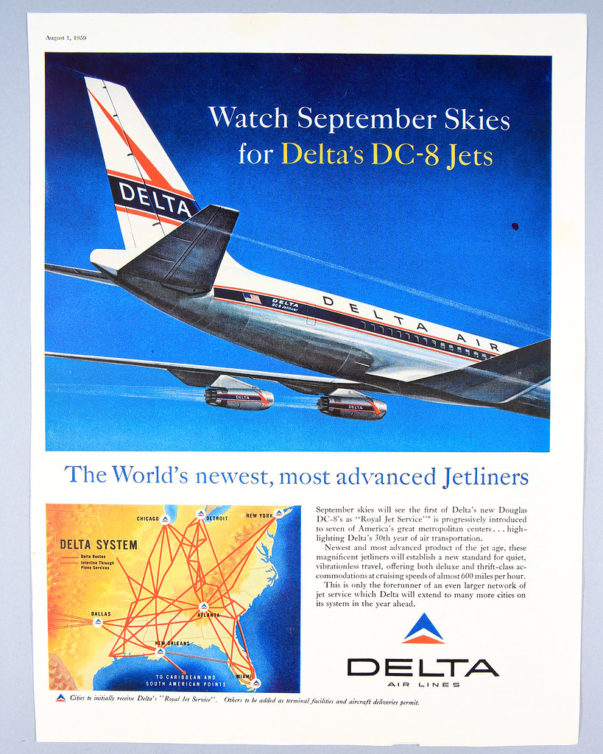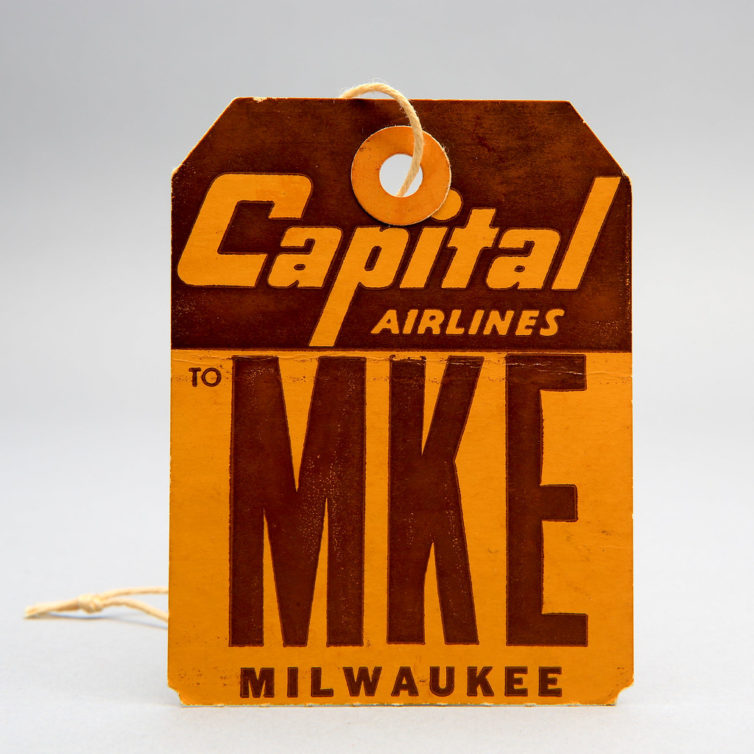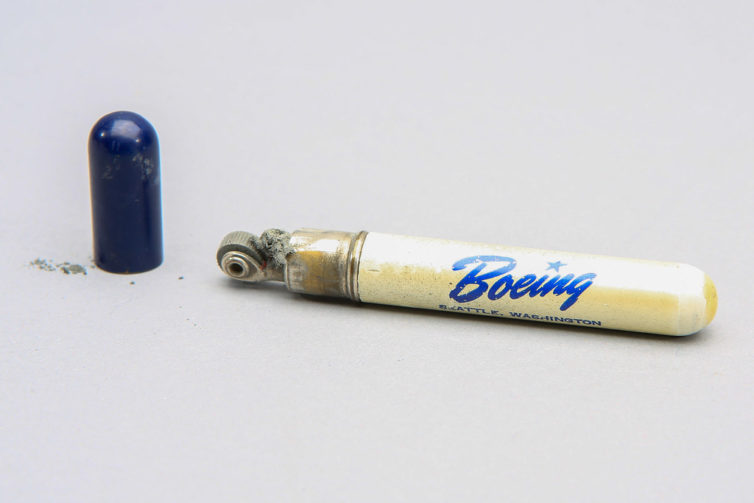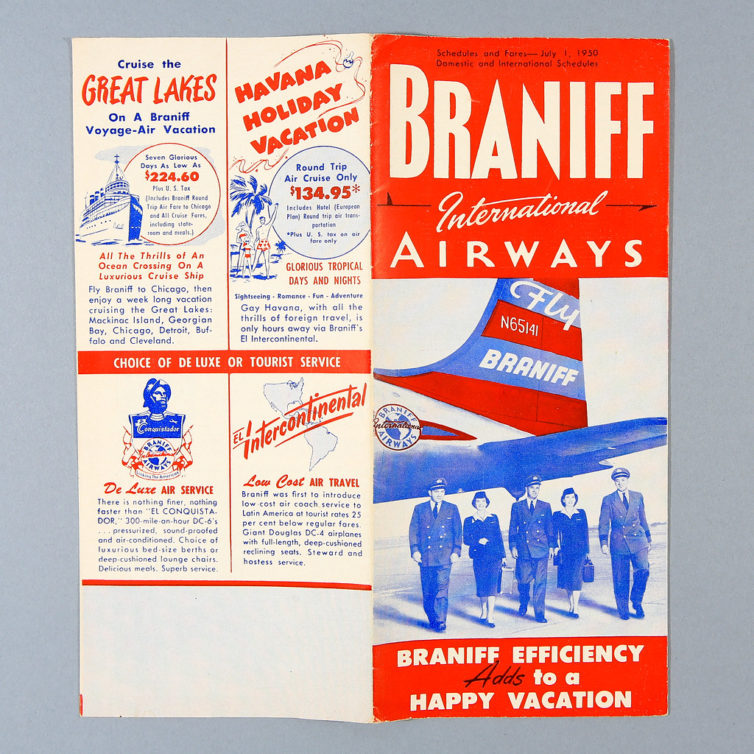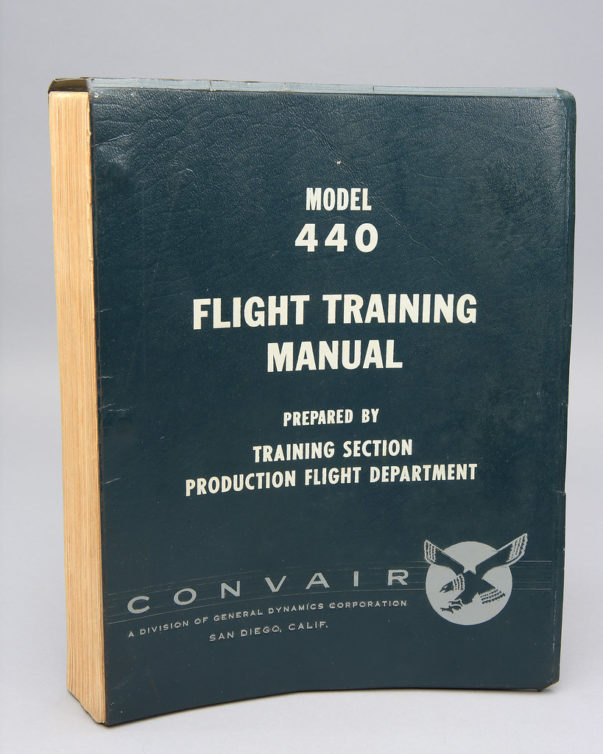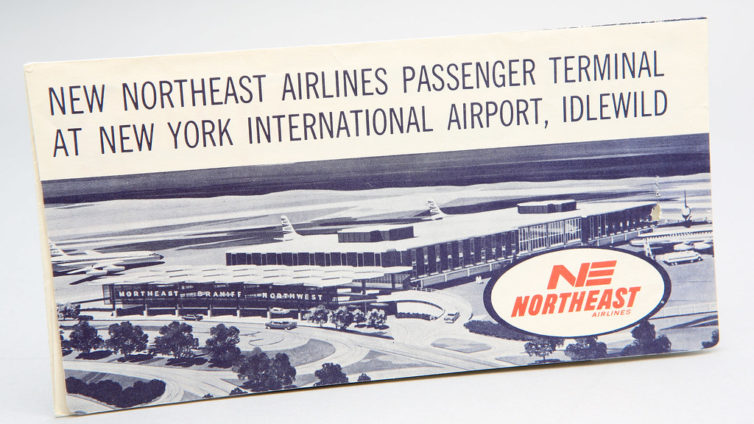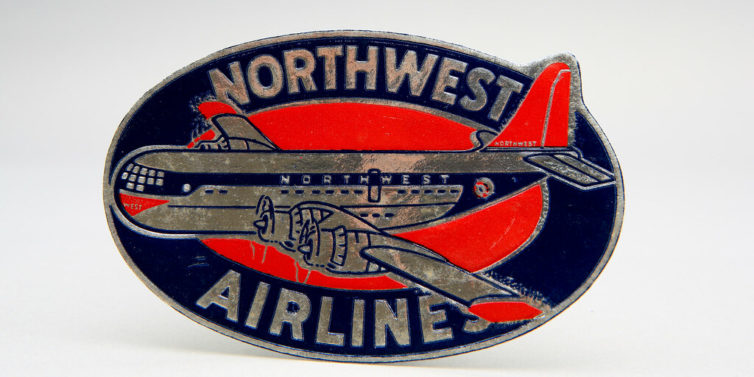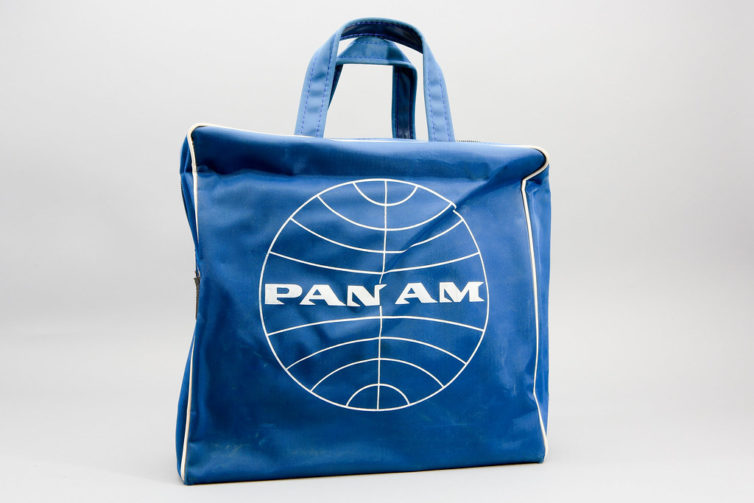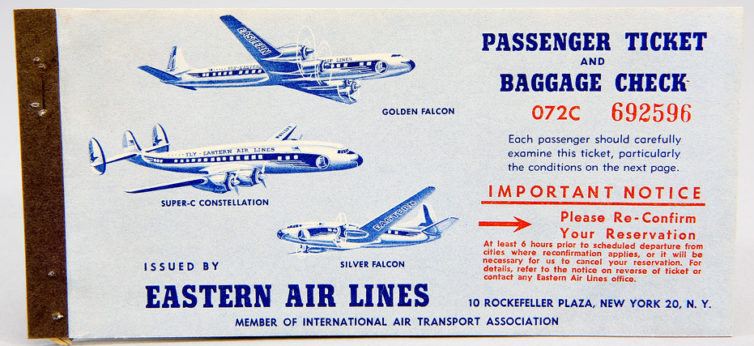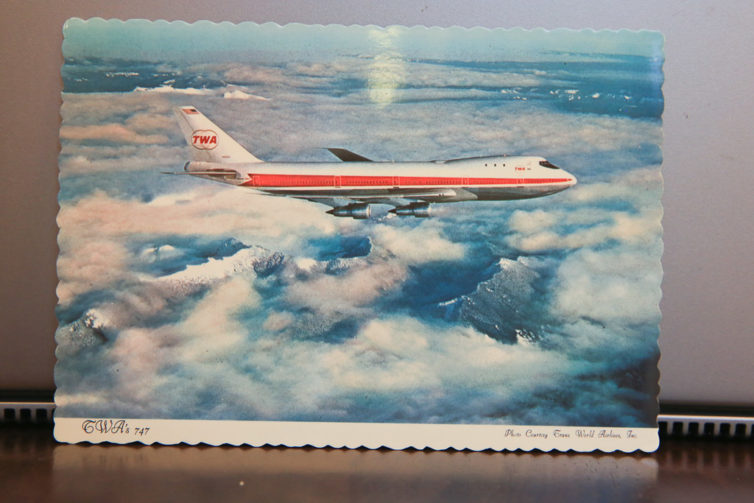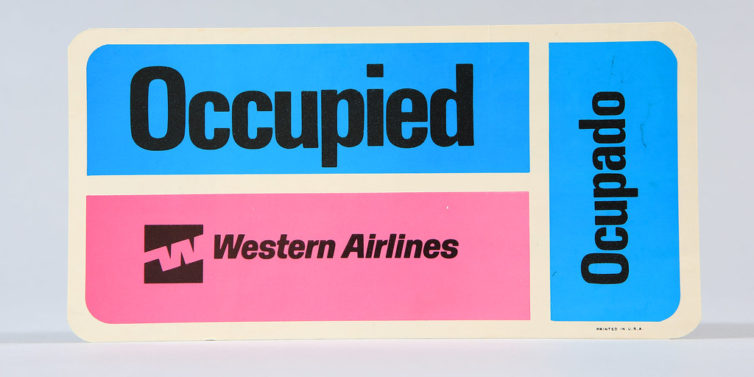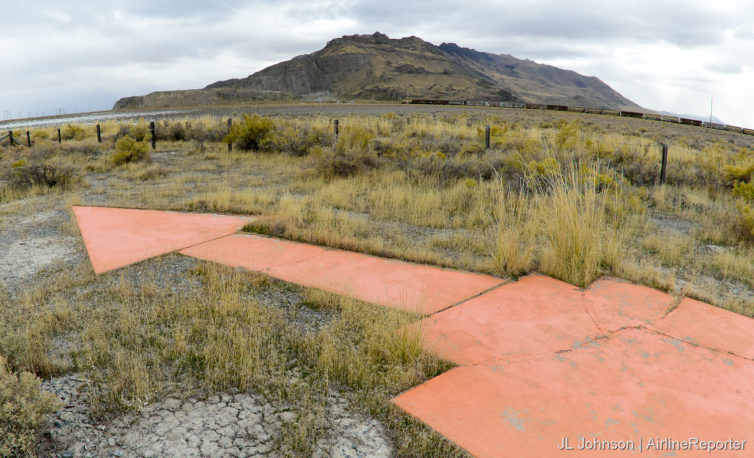
Seen in 2019 – an air mail arrow outside Salt Lake City, Utah points to SLC on the San Francisco-Salt Lake route
We aren’t ready to fly. Which is a bummer because travel is a large part of our identity. What are sidelined AvGeeks to do to remain connected to our passion? We are all coping with this disaster
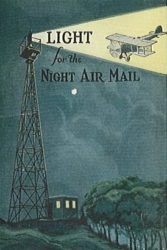
A 1920s advertisement bringing awareness to the TAS. – Image: Public Domain
in different ways. Looking to an aspirationally brighter future (and planning future travel) is certainly one method that holds promise. For my [formerly] frequently-traveled household we have been deep in research and planning for most of the year. As a result, our impossibly long #AvGeekToDoList has grown a great deal since our voluntary pandemic-grounding. One item of low-hanging socially-distanced fruit on our list is getting out and visiting more air mail arrows.
I have long been fascinated with the infancy of U.S. aviation. Keen AirlineReporter readers and AvHistorians alike will know that the modern aviation industry is what it is because of air mail. Indeed, all of the domestic legacies – except Delta – were formed or became successful because of income from air mail. These earliest routes were flown mostly during the day. In the evenings, mail would continue to travel, albeit via train. To further increase the speed of airmail it was determined night flying would be required. Thankfully congress stepped in to fund a vast array of large concrete arrows and beacons which formed the lighted Transcontinental Airway System (TAS.) At its peak the TAS had one concrete arrow roughly every 10 miles along the various routes. The TAS and its air mail arrows provided the infrastructure for the air mail boom which, in time, led to normalization of passenger service.
BONUS: How Delta got their non-airmail start
Join us for a discussion on how you can plan your own trip to visit these nearly forgotten 1920s-era relics of aviation’s past.
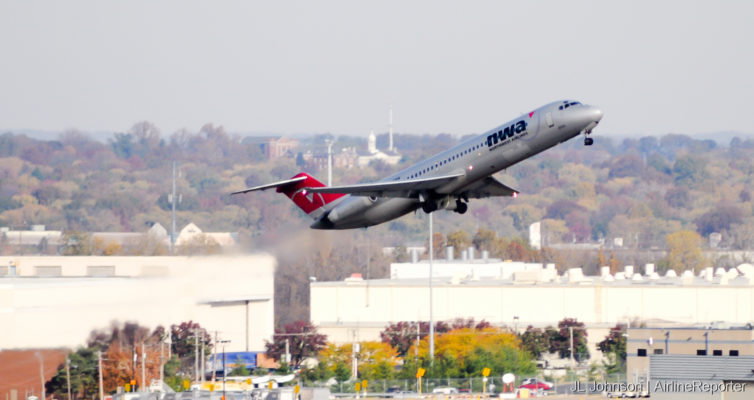
N755NW, a 42-year old NWA DC-9-41 Blasts Out of STL
Happy New Year! Heck, happy new decade while we’re at it.
With the closing of each year I invest a considerable amount of time in reflection before setting my goals and aspirations for the future. A perennial resolution I have set (and then catastrophically failed to meet) has been to make sense of the ~150K+ PlaneSpotting photos I have amassed since diving into the hobby over the summer of 2009.
While trying to determine what goal – if any – I would set around this, an intriguing question dawned on me. How has PlaneSpotting changed in the past decade? Sure, we didn’t have JetTip, ADSBexchange, or FlightRadar24 to allow for surgical, dare I say lazy, spotting. We just had to show up, maybe listen to ATC, and see what the day would bring. But how has what we might see changed?
Well, I have photographic proof of what aviation looked like at a number of airports over the course of 2010. In retrospect, it was a good travel and spotting year for me. What if, perhaps, I set a mini goal to at the very least look at every photo shot over that one year and highlight particular items of note? I spent a number of hours over the past weekend doing just that. One clear difference? My skill and equipment have come a long way over the past decade! But I digress.
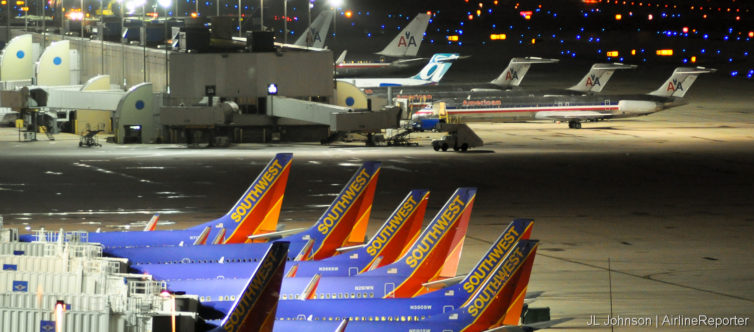
Click through to join me for a stroll down AvGeek memory lane for a year which proved transformational to the AvGeek world.
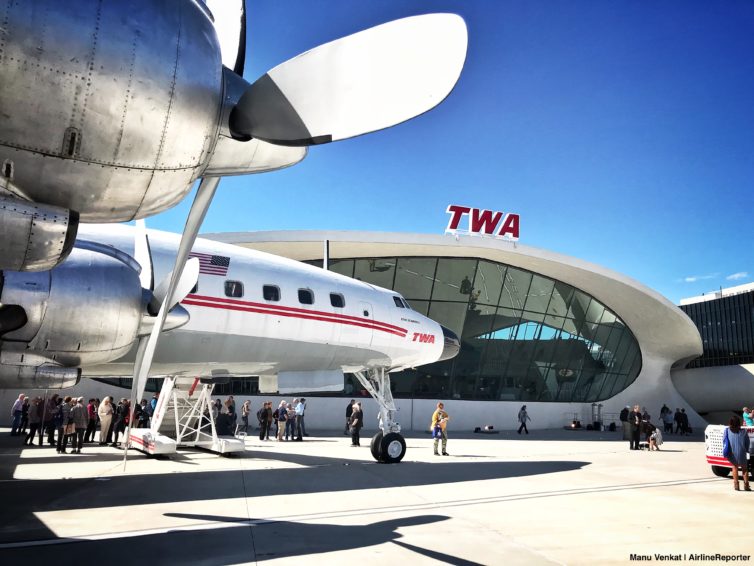
Is there a list of AvGeek wonders of the world? Probably not, but if there was, the new TWA Hotel at New York’s JFK International Airport was trying from the outset to make it onto the list. Initially I was worried that the project — built around the historic TWA Terminal at JFK — might be a victim of stratospheric expectations. But from the moment I walked into the historic gem of a building it was clear that the attraction was everything we all wanted it to be, and more.
Just like the beautifully restored Lockheed Constellation sitting on the premises, the TWA Hotel fires on all cylinders. It’s as much a museum as a hotel, with tons of exhibits about the jet age’s golden years. The staff is having a total blast, with 60’s-style uniforms to match. There’s even an infinity pool on the roof with an incredible view of the ramp and runways. I mean seriously, how can you beat all that??
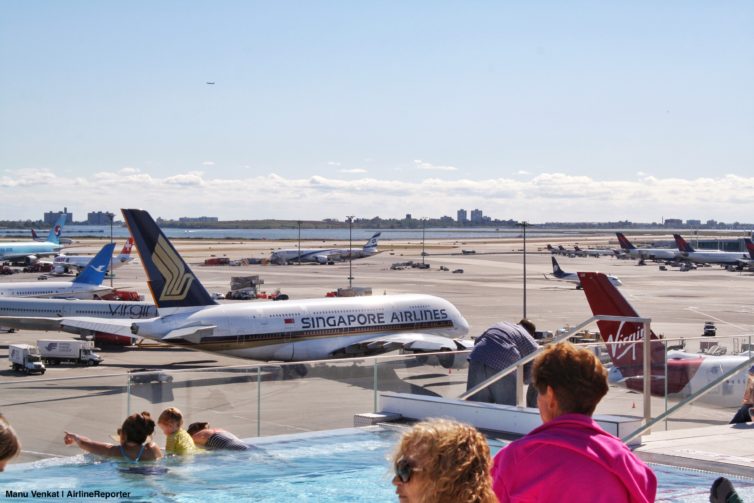
If by this point you’re not itching to see all the photos and videos we took during our visit, we’re questioning your AvGeek credentials. Read on and enjoy!
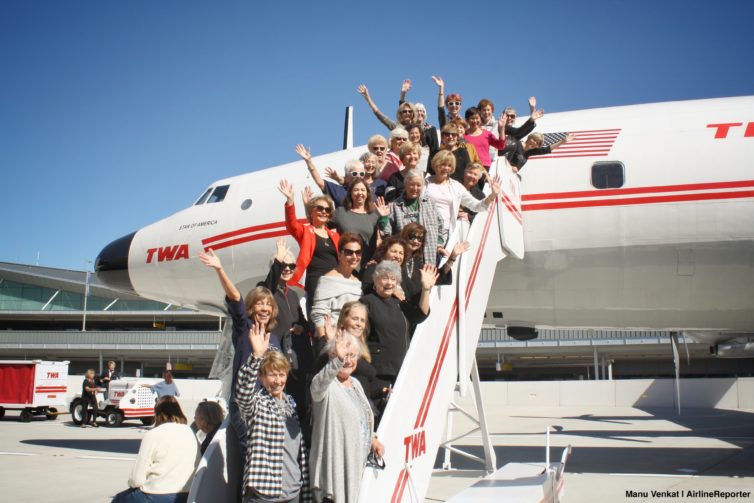
It’s been almost twenty years since TWA folded, but some of its employees still stay in touch. Every year, the Silver Wings organization of former TWA flight attendants hosts a get-together where they celebrate their shared history. The meetings usually rotate between U.S. cities, and this year there was only one logical choice: New York, thanks to the awesome new TWA Hotel that opened in May. If you’re one of the few AvGeeks out there who haven’t heard about it, the hotel is built around Eero Saarinen’s iconic TWA terminal at JFK and features historical displays, a rooftop pool with tarmac views, and more.
We got to join in for the Silver Wings meetup, and it was as awesome as we were hoping it would be. The turnout was incredible, and attendees were having a blast touring their old stomping grounds and seeing the old TWA terminal brought back to life.
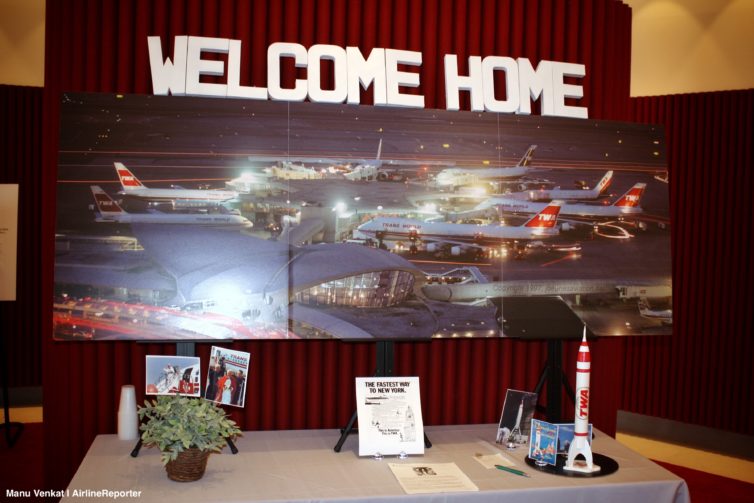
Read on for a recap of the weekend and an insider look at the TWA Hotel, which — spoiler alert — is everything an AvGeek would want it to be.
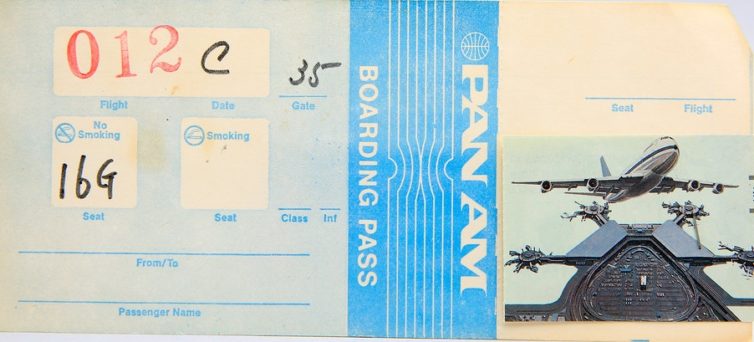 Make sure you have a few hours free before continuing with this story. You might also want to make sure you have a few extra dollars to spend on some airline goodies! Noted AvGeek, photographer, and good friend Jeremy Dwyer-Lindgren has recently decided a big chunk of his airline collection needs to go. And guys, its a huge haul.
Make sure you have a few hours free before continuing with this story. You might also want to make sure you have a few extra dollars to spend on some airline goodies! Noted AvGeek, photographer, and good friend Jeremy Dwyer-Lindgren has recently decided a big chunk of his airline collection needs to go. And guys, its a huge haul.
There’s something for every AvGeek here: post cards, menus, paper ads, posters, bag tags, matchbooks, route maps, timetables, and even a small number of vintage hand bags…including a few Pan Am. And that’s only part of it ’“ all in all there’s over 2,000 items for sale.
Easier than eBay, don’t have to travel to the big shows, and I know where he lives if something goes bad on you. There’s lots of photos here but that’s only about 75% of the collection: the full list is located here on a detailed spreadsheet.
If you see something you like, shoot him an email (je*************@***il.com) and let a bit of airline history into your home! For me… I am not quite ready to give up anything in my personal collection, although mine is not as amazing as Jeremy’s!












